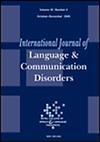A Scoping Review of the Observed and Perceived Functional Impacts Associated With Language and Learning Disorders in School-Aged Children
Abstract
Background
Assessing children with Developmental Language Disorder (DLD) and Specific Learning Disabilities (SLD) requires a clear understanding of how these conditions impact their daily lives. However, existing assessment tools are not systematically grounded in a theoretical framework, and there is a lack of consensus regarding the relevant dimensions and indicators to be evaluated. Notably, the concepts of functional impact and functional impairment—which are essential for identifying needs, informing clinical decision-making and tailoring interventions—remain poorly defined and are frequently used interchangeably, even though they refer to distinct aspects of functioning. This conceptual ambiguity hinders the development of consistent, theory-based assessment models and contributes to inconsistencies across both research and clinical settings.
Aims
The study aims to describe and clarify the concepts of ‘functional impact’ and ‘functional impairment,’ as well as to identify and classify the leading dimensions and indicators used to measure the functional consequences of DLD and SLD in school-aged children.
Methods and Procedures
A scoping review was performed on a systematic search of studies published between January 2013 and November 2023 across six databases (Medline, PsycINFO, CINAHL, ERIC, Psychology & Behavioural Science Collection and Education Source). In total, 1950 documents were reviewed using predefined eligibility criteria, resulting in 53 documents being included for the final data extraction. The analysis followed a qualitative approach, combining both inductive and deductive analyses. An inductive approach was used to develop a new conceptual framework (definitions and classification system), while a deductive approach was applied to organise the identified dimensions and indicators into five overarching categories.
Main Contribution
There is notable variability in the terminology used to describe functional impact and functional impairment, as well as ambiguity surrounding their respective meanings. Using an iterative lexicographical approach, we established operational definitions, distinguishing between two subcategories of functional consequences: observed and perceived functional impacts. This conceptual distinction enhances the clarity and applicability of these constructs in both research and clinical settings. Furthermore, five major categories were identified to guide the assessment of the functional impacts: individual abilities, personal factors, daily and meaningful activities, social relationships and environmental factors. Each category encompasses a range of dimensions and indicators. Based on these findings, we propose a structured and integrated framework: the Observed and Perceived Functional Impacts (OPFI) model for assessing functional consequences.
Conclusions and implications
Distinguishing between observed and perceived functional impacts provides a clearer and more comprehensive understanding of children's needs. This differentiation supports more targeted and effective clinical recommendations aimed at enhancing their communication skills, daily and meaningful activities, social relationships and overall quality of life. The proposed theoretical framework offers a clear conceptual framework for speech-language pathologists and other healthcare and educational professionals in shaping evaluation and intervention practices. This framework could be used to develop assessment tools aimed at assessing children's real-life functioning.
WHAT THIS PAPER ADDS
- DLD and SLD significantly affect children's daily lives, particularly communication, social relationships and academic success. To design interventions tailored to each child's needs, it is crucial to accurately understand and measure these impacts effectively. However, the current terminology used to describe these impacts and the available assessment methods vary widely, leading to uncertainties about what should be evaluated for clinicians.
- The scoping review results allow us to disentangle the concepts of ‘observed’ and ‘perceived’ functional impacts of language and learning disorders by providing explicit definitions of these two concepts. Key dimensions and indicators were identified for both observed and perceived functional impacts. We propose a structured model based on these dimensions and indicators: Observed and Perceived Functional Impacts (OPFI) model. Considering its dynamic nature, this model will facilitate a more systematic assessment of the functional consequences for children with language or learning disorders.
- Given the limitations of standardised tests, enhancing speech-language assessments by integrating observations from parents, teachers, and other professionals is essential to comprehensively understand the child's strengths, challenges and needs. Focusing on the functional impacts of disorders—such as social interaction, daily activities and adaptation to school and family environments—refines intervention plans adapted to the child's specific needs and enables more precise monitoring of their progress. Including the child's perspective from an early age through well-suited self-report questionnaires or open-ended questions during clinical interviews supports a better understanding of their experiences and perceptions of the disorder.


 求助内容:
求助内容: 应助结果提醒方式:
应助结果提醒方式:


